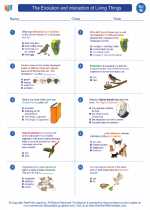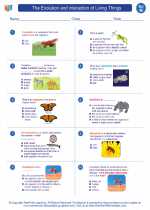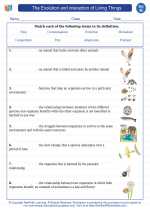Understanding Families in Science
In science, the concept of families refers to groups of elements on the periodic table that share similar chemical properties. These elements are organized into families based on their electron configurations and the patterns in their chemical behavior.
Types of Families
There are several main families of elements on the periodic table:
- Alkali Metals: These elements are found in Group 1 of the periodic table and include lithium, sodium, and potassium. They are highly reactive and tend to form compounds with similar properties.
- Alkaline Earth Metals: This family includes elements in Group 2, such as magnesium and calcium. Like the alkali metals, they are also reactive, but less so than the alkali metals.
- Transition Metals: Transition metals are located in the middle of the periodic table and are known for their ability to form colorful compounds and for their high melting points.
- Halogens: The halogens are found in Group 17 and include elements such as fluorine, chlorine, and iodine. They are highly reactive nonmetals.
- Noble Gases: This family includes helium, neon, and argon, among others. Noble gases are known for their low reactivity and are often used in lighting and other applications.
Properties and Trends
Elements within the same family often exhibit similar properties and trends. For example, elements in the alkali metal family are known for their softness and low melting points, while elements in the halogen family are known for their high reactivity.
Additionally, as you move down a family on the periodic table, certain properties tend to change in a predictable manner. For example, the atomic radius of elements generally increases as you move down a family, while the reactivity of the elements may change in a consistent manner.
Study Tips
When studying families of elements, it can be helpful to create visual aids such as charts or diagrams to illustrate the relationships between elements within a family. Additionally, practicing with sample problems and quizzes can help reinforce your understanding of the trends and properties of element families.
Remember to pay attention to the specific characteristics of each family and how they relate to the arrangement of elements on the periodic table.
By understanding the concept of families on the periodic table, you can gain valuable insights into the behavior and characteristics of different elements, which is important for various fields of science and chemistry.
.◂Science Worksheets and Study Guides Eighth Grade. The Evolution and interaction of Living Things

 Worksheet/Answer key
Worksheet/Answer key
 Worksheet/Answer key
Worksheet/Answer key
 Worksheet/Answer key
Worksheet/Answer key
 Vocabulary/Answer key
Vocabulary/Answer key
 Vocabulary/Answer key
Vocabulary/Answer key
